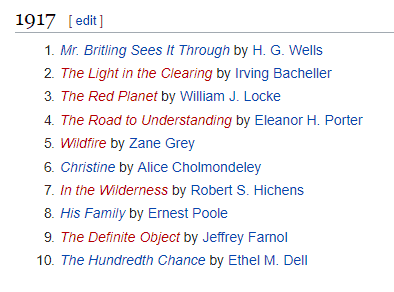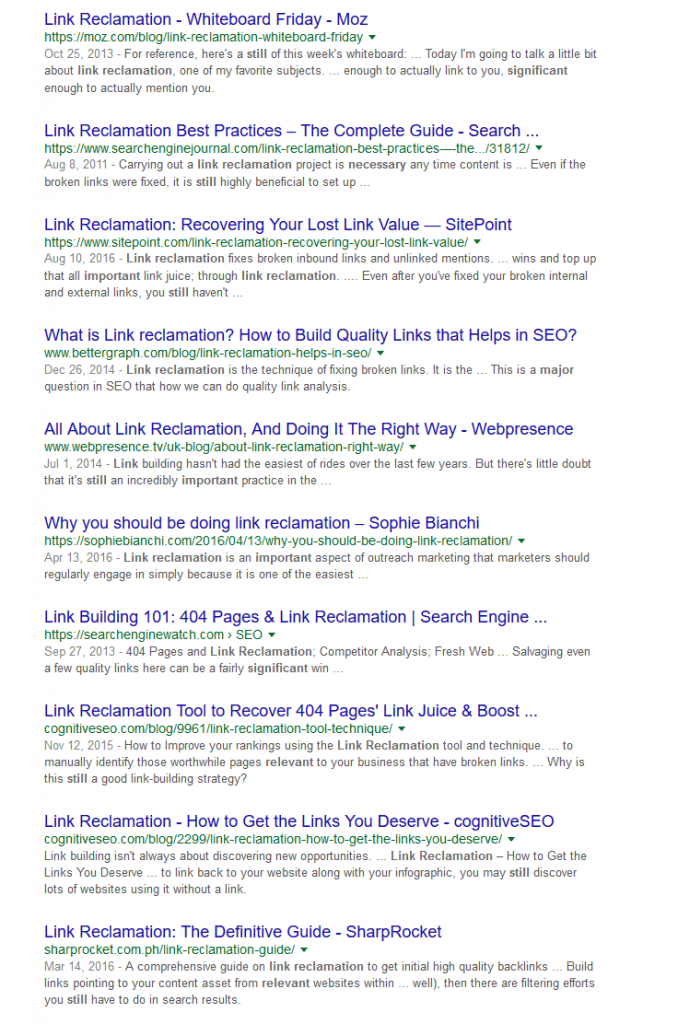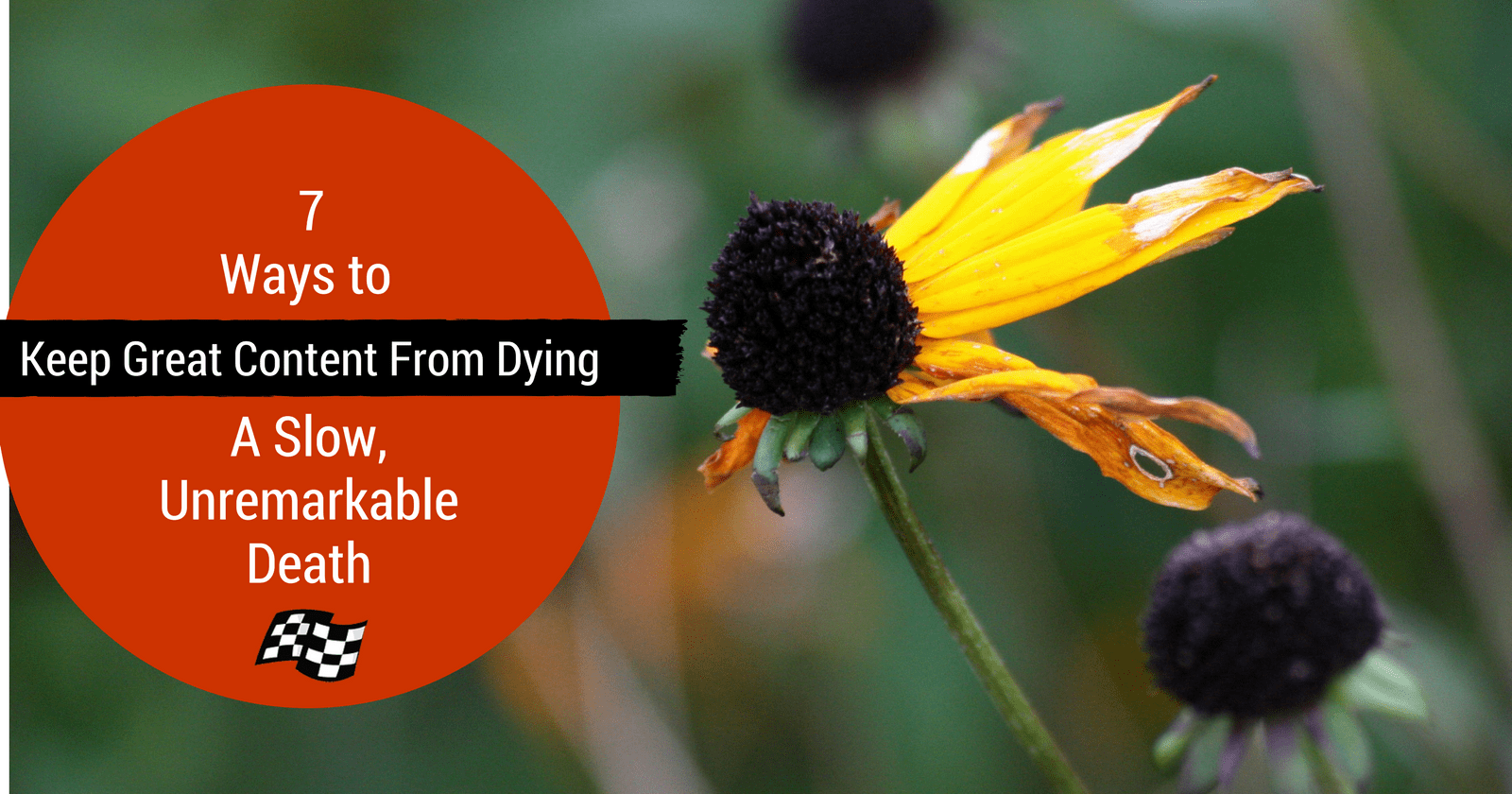A website that isn’t adapting is a website that’s dying. The internet changes so fast that the moment you stop improving your website is the same moment that you start losing momentum and falling behind the competition.
If your site isn’t actively adapting to the changing nature of the web, it’s stagnating and growing outdated, stale, and – yes – even boring.
And the content on your website is no different.
I don’t need to tell you (but I will anyway) that content is an important part of successful digital marketing. But content, once published, immediately begins the journey of becoming old content. And old content is dying content.
Every once in a while, some content is so spectacular that it transcends time. But that’s a rarity.
If you think about all the books that have been published throughout history up until 100 years ago, only a fraction of them are still being printed and read today.
How many books printed this year will be on anyone’s reading list 100 years from now?
Well, let’s see how many of the top books from 100 years ago you’ve heard of:

We can run the same analogy with movies. There are some movies that have become classics that get passed on from generation to generation. But for every classic, how many other movies have all but disappeared from the DVD shelves and never make the streaming lists?
The internet is still a baby compared to print, but all signs point to an even faster degradation of content value. Studies show that the average shelf life is typically a week, a month if you’re lucky. Which means the content on your website has an even shorter shelf-life than you can imagine.
This is why we need be producing new content. Like, all the time.
But man, doesn’t that suck? All that hard work that went into the content we created yesterday is going to be gone tomorrow (or soon enough, anyway.) And then we have to go through even more hard work to replace it.
Unfortunately, there’s nothing you can do about that.
However, there is something you can do to keep your old, great content from dying as quickly.
Here are seven ways to keep old content alive and producing value for your company.
1. Evergreen It
There are many different types of content. Some of it is designed to be relevant for only a short time (such as news content), while other content can hold its value a lot longer. And then there is evergreen content that should be able to maintain its value for years without getting outdated.
There is a place for each type of content, but you always want to strive to produce some forms of evergreen content. The more evergreen content you have on your site, the less content you have to replace on a regular basis.
Evergreen content is difficult to produce in any industry, but it’s especially difficult in the digital industry. Eventually, things change. But there are always opportunities to write content on topics that are less likely than others to become outdated.
2. Optimize It
Content that is optimized for relevant keywords has a higher likelihood of getting discovered than non-optimized content. And that discovery can last for years!
I still have posts that I wrote more than 10 years ago getting substantial traffic. They just happen to have been optimized for a set of long-tail phrase that still gets actively searched.
Optimizing content extends its life. As long as search engines continue to rank the content for even semi-frequently searched phrases, you’ll see a steady stream of new traffic being delivered to it.
Check out this search on link reclamation:

Of the top 10 results, only three were from within the past year. The number two result is six years old! That’s some serious longevity for a topic in a very fast-changing industry. It shows that a little optimization can go a long, long way.
3. Link It
Content, especially content published in blogs, quickly gets buried under the newer posts being published each day. After months and years, those old posts are barely findable.
But that doesn’t necessarily mean the content isn’t valuable.
You don’t necessarily want to republish old content so it moves to the top of the list, because that just buries the newer content you’ve written. Instead, though, you can write new content that links to this older, yet still valuable content.
Not only are you’re giving your readers something fresh (the new content being published), but you’re directing them toward other relevant content they might find valuable.
Anytime you write something that can be linked to more information you’ve already written, do it!
The web isn’t a brochure. It’s more like a choose-your-own-adventure novel (see what I just did there?).
That historical content can be a goldmine of information, provided you’re giving your new readers a way to access it.

Most of your site visitors are going to scroll through your content archives looking for something of value. That means you have to point it out to them. The worst that can happen is they won’t follow the link. But at least give them the opportunity.
4. Redirect It
Pages on websites often get moved or deleted over time. Perhaps you’re restructuring your navigation, removing services that you no longer offer, or deleting tutorials that have become obsolete.
Just because this content is considered old, doesn’t mean that it can’t still work for you.
Any time content is removed, you need to consider if there is newer content that the reader would be interested in. If so, implement a redirect to that newer content.
You never know what keywords that page might be ranking for or who has it bookmarked somewhere and will revisit it. By redirecting the URL to fresher content, you keep visitors engaged with your site.
In most cases, they’ll be none the wiser that they are being redirected. That’s a far cry better than giving them a message that the page is gone and asking them to search for something similar.
If you have the similar content, send your visitor directly to it and cut out the annoyance.
5. Repurpose It
If you’re running out of ideas of content to write, a great option is to repurpose existing content. Repurposing content is simply the process of taking content in one form and recreating it in another form.
Not long ago, I wrote an article that I thought would make a good presentation. I pitched the idea to a conference, and they asked me to speak. Using the original article, I created a presentation. By the time I was done, the presentation was significantly different from the original article – not to mention much more visual. In fact, I loved the presentation so much, I turned it back into an article!
The second article loosely followed the presentation, and I was able to reuse many of the visuals I had created. By the time I was done, there was almost no similarity between the old article and the new one.
There are many ways to take existing content and make it new for an entirely different audience.
6. Refresh It
Some content that has grown old or out of date simply needs a refresh. Look through the existing content on your site and find past articles that are still relevant topically, but the execution or tips may have changed over time. Then simply update it!
It may not be evergreen content, but by providing an update, you are extending its life considerably. You might even want to update the publish date of the original article so visitors will know that it’s fresh.
We’ve been doing this with an old usability series we created back in 2007. The advice is still sound, and in many cases, the articles only need some fresh visuals and a few changes to make them relevant, so we’ve been republishing the series with an updated publish date.

7. Replace It
Sometimes refreshing an article just can’t be done. Like a vehicle that gets totaled, some things can’t be fixed. That’s where you simply start over and rewrite the whole thing from scratch.
This article is a perfect example. What you are reading now stems from an article I wrote way back in 2010.
The idea behind it was good, but I could see that a rewrite would be more valuable than simply refreshing what was there. I used the bones of the original article but added a significant amount of new content and points that were not part of the original.
You can do the same with your content. When you’re done, you can either delete the old article (and redirect it) or leave it there and let the new piece stand on its own.
Ode to Long-Lost Content
It almost makes me sad when I think about all the content that has been created since the invention of the written word that will never be read again. (I said almost. I really only get sad about my own content.) Millions and millions of words (again, still thinking of my own) are lost in time.
But just like a publisher re-releasing a book, or a Hollywood studio remaking a movie, you have the same opportunities to help your own content maintain its value for a bit longer.
That doesn’t mean you should stop producing new content, but it does allow you to produce less new content. By keeping your old content alive for as long as possible you’ll have to fight less for new visitors. You’re letting work you’ve already done take some of the burden off the new work you will always have to do.
More Content Resources Here:
- Increasing SEO Traffic by Updating and “Thickening” Your Old Blog Posts
- 9 Insightful Ways to Repurpose Old Content (And Resurrect Traffic)
- Your Essential Guide to Internal Content Linking
Image Credits
Featured Image and in-post Photo #3: Created by Stoney deGeyter
All screenshots taken by Stoney deGeyter, September 2017




